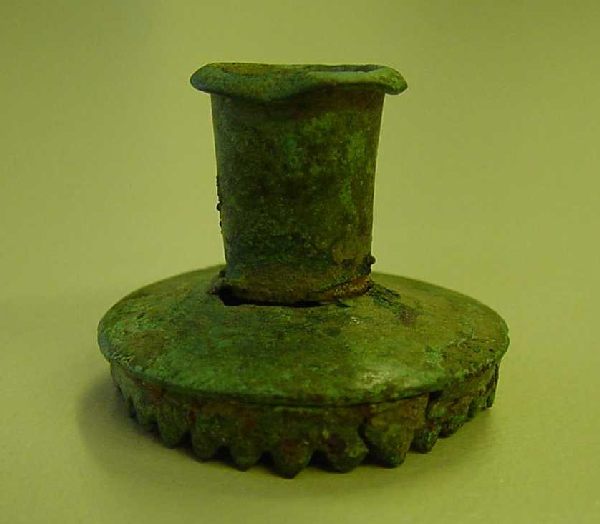 |
|
Trepan, um 300 n.Chr.
Fundort: Trier, Ortsteil Feyen.
|
The surgical trepan represents a special form of the trephine - also other occupations such as the sculptor, the Trepane used to roundish structures, such as eyes, hair curls, etc. represent.
The surgical trepan
The trepanation so widespread in prehistoric times was rather rare among the ancient Egyptians and Romans - presumably the indication for this daring intervention had drastically changed. According to the Hippocratic inscription "Injuries to the head," the sawing of the skull was explicitly limited to those cases where the bone was splintered (Chapter 9). To ensure this diagnosis, the surgeon first had to expose the skull bone over a large area and scrape it clean. If there were doubts, a black paste could be applied and then wiped away to reveal fine hairline cracks in the bone (chapter 14).
HIPPOCRATES described 2 varieties of Trepan:
- the trepan "à tarière" (with drill)
- the Trepan "à couronne avec pyramide" (Krontrepan)
At the time of GALEN, the latter variety had been forgotten. To prevent the "trépan à tarière" from sagging too deeply, a circular bead was added and the trepan was now called "abaptison" = not immersed (see baptism by immersion in a baptistery).
In CELSUS the trepanation is described for small infection sites (for him was the "infection" of the bone as an indication for trepanation) was the so-called Kron-trepan, called CELSUS modiolus, which meant something like "little cylinder". The actual Trepan was indeed a metal cylinder whose lower edge was toothed serrated. The middle was marked by a removable spike that fixed the trephine until the teeth had gripped the bone. The trepan was kept moving by a small fiddle bow. He rotated with light pressure, gradually milled into the bone. During the procedure, the surgical field should be cooled frequently with water. The "inflamed" site circumscribed by the trephine was finally removed with a bone chisel. Before and during the procedure, the condition of the bone had to be checked again and again with a fine probe.
The Trepan presented here has a diameter (measured at the sprocket) of 29 mm. The length of the teeth is on average 4 mm. A small bead of 0.5 mm prevented an uncontrolled breaking of the drill into the cranium. Our "abaptison" differs significantly from the famous Krontrepanen from Bingen, who had no such protections and suddenly could break into the brain mass including rondels.
|